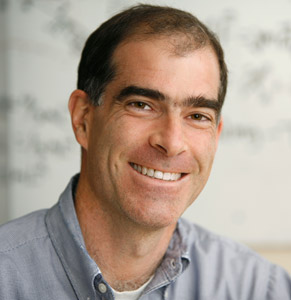Dr. Philip V. Bayly
 The Lilyan and E. Lisle Hughes Prof. of Mechanical Engineering
The Lilyan and E. Lisle Hughes Prof. of Mechanical Engineering
Chair, Mechanical Engineering and Materials Science
Washington University in St. Louis
Friday, September 28th, 2012, 2:00 pm
Warnock Engineering Bldg. (WEB) 1230
Reception to follow at 3:00 pm (flyer)
Seminar Abstract
High linear and angular accelerations of the skull can lead to rapid deformation of brain tissue and subsequent traumatic brain injury (TBI), but the precise mechanisms remain incompletely understood. Computer simulations of head-brain biomechanics offer enormous potential for improved understanding and prevention of TBI. However simulations must be complemented by biomechanical measurements to parameterize and validate the underlying mathematical models. The nonlinear, anisotropic, viscoelastic, heterogeneous character of brain tissue, and the intricate connections between the brain and skull all play important roles in the brain’s response to skull acceleration. Studies of animal brains and ex vivo brain tissue have led to useful advances, but these models provide only limited insight into the response of the intact human brain. On the other hand, efforts to understand the motion of the human brain in vivo are complicated by the fact that it is delicate, hidden, and well-protected by the skull. I will describe MR imaging techniques to characterize brain deformation, estimate brain material properties, and illuminate the boundary conditions between brain and skull, with the objective of improving the ability to simulate TBI.
About Dr. Bayly
Philip Bayly is The Lilyan and E. Lisle Hughes Professor of Mechanical Engineering and Chair of the Department of Mechanical Engineering and Materials Science at Washington University in Saint Louis. He received the A.B. degree in Engineering Science from Dartmouth College, an MS in Engineering from Brown University and a PhD in Mechanical Engineering from Duke University. His interests involve nonlinear dynamics, signal processing and image analysis. His current research is focused on the application of dynamic imaging and image processing to understand the mechanics of biological systems, from subcellular structures to tissues.